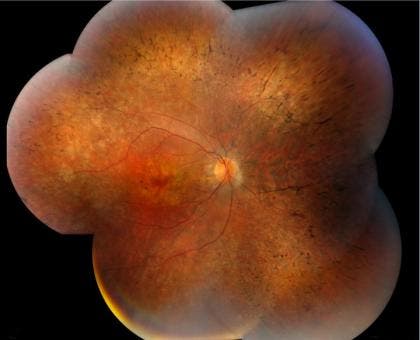Urine isn’t exactly the first place you want to start looking for eye diseases – but according to a new Duke University study a patient’s urine can be linked to gene mutations that cause Retinitis Pigmentosa (RP), an inherited, degenerative disease that results in severe vision impairment and often blindness.

“My collaborators, Dr. Rong Wen and Dr. Byron Lam at the Bascom Palmer Eye Institute in Florida first sought my expertise in mass spectrometry to analyze cells cultured from a family in which three out of the four siblings suffer from RP,” said Ziqiang Guan, an associate research professor of biochemistry in the Duke University Medical School and a contributing author of the study.
The team had previously sequenced the genome of this family and found that children with RP carry two copies of a mutation of a gene responsible for synthesizing organic compounds called dolichols. This mutation appears to be prevalent in RP patients of the Ashkenazi Jewish origin (the people who are most suffering from the disease), and some 0.3% of all Ashkenazi carry one copy of the mutation.
They think that urine makes for better testing than blood in this case.
“Since the urine samples gave us more distinct profiles than the blood samples, we think that urine is a better clinical material for dolichol profiling,” he said. Urine collection is also easier than a blood draw and the samples can be conveniently stored with a preservative. The team is now pursuing a patent for this newl diagnostic test for the DHDDS mutation.
There are currently no treatments for RP, but Guan hopes that developing this urine-based test will also provide insight on how this ailment could be treated.
“We are now researching ways to manipulate the dolichol synthesis pathway in RP patients with the DHDDS mutation so that the mutated enzyme can still produce enough dolichol-19, which we believe may be important for the rapid renewal of retinal tissue in a healthy individual.”






